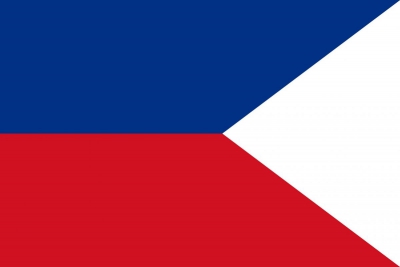The Treaty of San Francisco (, San-Furanshisuko kwa-Jyaku), also called the Treaty of Peace with Japan (, Nihon-koku to no Heiwa-Jyaku), re-established peaceful relations between Japan and the Allied Powers on behalf of the United Nations by ending the legal state of war and providing for redress for hostile actions up to and including World War II. It was signed by 49 nations on 8 September 1951, in San Francisco, California, U.S. at the War Memorial Opera House. Italy and China were not invited, the latter due to disagreements on whether the Republic of China or the People's Republic of China represented the Chinese people. Korea was also not invited due to a similar disagreement on whether South Korea or North Korea represented the Korean people.It came into force on 28 April 1952, and legally ended the U.S.-led Allied occupation of Japan. In Article 11, Japan accepted the judgments of the International Military Tribunal for the Far East and of other Allied War Crimes Courts imposed on Japan both within and outside Japan.This treaty ended Japan's role as an imperial power, allocated compensation to Allied and other civilians and former prisoners of war who had suffered Japanese war crimes during World War II, ended the Allied post-war occupation of Japan, and returned full sovereignty to it. This treaty relied heavily on the United Nations Charter and the Universal Declaration of Human Rights to enunciate the Allies' goals.
This treaty, along with the Security Treaty signed that same day, marks the beginning of the San Francisco System which defines Japan's relationship with the United States and its role in the international arena and characterizes Japan's post-war history.
The Allied Occupation of Japan (連合国占領下の日本, Rengōkoku senryō-ka no Nihon) was a military occupation of Japan in the years immediately following Japan's defeat in World War II. Led by the United States with the support of the British Commonwealth and the supervision of the Far Eastern Commission, the occupation lasted from 1945 to 1952 and involved a total of nearly 1 million Allied soldiers. The occupation was overseen by American General Douglas MacArthur, who was appointed Supreme Commander for the Allied Powers by US President Harry Truman; MacArthur was succeeded as supreme commander by General Matthew Ridgway in 1951. Unlike in the occupation of Germany, the Soviet Union had little to no influence over the occupation of Japan, declining to participate because it did not want to place Soviet troops under MacArthur's direct command.This foreign presence marks the only time in Japan's history that it has been occupied by a foreign power. At MacArthur's insistence, Emperor Hirohito remained on the imperial throne. The wartime cabinet was replaced with a cabinet acceptable to the Allies and committed to implementing the terms of the Potsdam Declaration, which among other things called for the country to become a parliamentary democracy. Under MacArthur's guidance, the Japanese government introduced sweeping social reforms and implemented economic reforms that recalled American "New Deal" priorities of the 1930s under President Roosevelt. Japan's existing constitution was repealed and replaced by a new, American-written constitution, and the emperor's theoretically vast powers, which for many centuries had been constrained only by conventions that had evolved over time, became strictly limited by law. Article 9 of the constitution explicitly forbade Japan from maintaining a military or pursuing war as a means to settle international disputes.
The occupation officially ended with coming into force of the San Francisco Peace Treaty, signed on September 8, 1951, and effective from April 28, 1952, after which Japan's sovereignty – with the exception of the Ryukyu Islands – was fully restored. However, the simultaneous imposition of the U.S.-Japan Security Treaty ensured that tens of thousands of American soldiers would remain based in Japan indefinitely.The occupation of Japan can be usefully divided into three phases: the initial effort to punish and reform Japan; the so-called "Reverse Course" in which the focus shifted to suppressing dissent and reviving the Japanese economy to support the U.S. in the Cold War; and the final establishment of a formal peace treaty and enduring military alliance.

1952Apr, 28
Occupied Japan by the Supreme Commander for the Allied Powers: The United States occupation of Japan ends as the Treaty of San Francisco, ratified September 8, 1951, comes into force.
Choose Another Date
Events on 1952
- 2May
De Havilland Comet
The world's first ever jet airliner, the De Havilland Comet 1 makes its maiden flight, from London to Johannesburg. - 3Jul
RMS Queen Mary
The SS United States sets sail on her maiden voyage to Southampton. During the voyage, the ship takes the Blue Riband away from the RMS Queen Mary. - 7Jul
SS United States
The ocean liner SS United States passes Bishop Rock on her maiden voyage, breaking the transatlantic speed record to become the fastest passenger ship in the world. - 15Sep
Eritrea
The United Nations cedes Eritrea to Ethiopia. - 20Oct
Mau Mau Uprising
Governor Evelyn Baring declares a state of emergency in Kenya and begins arresting hundreds of suspected leaders of the Mau Mau Uprising, including Jomo Kenyatta, the future first President of Kenya.

 English
English  español
español  français
français  português
português  русский
русский  العربية
العربية  简体中文
简体中文 